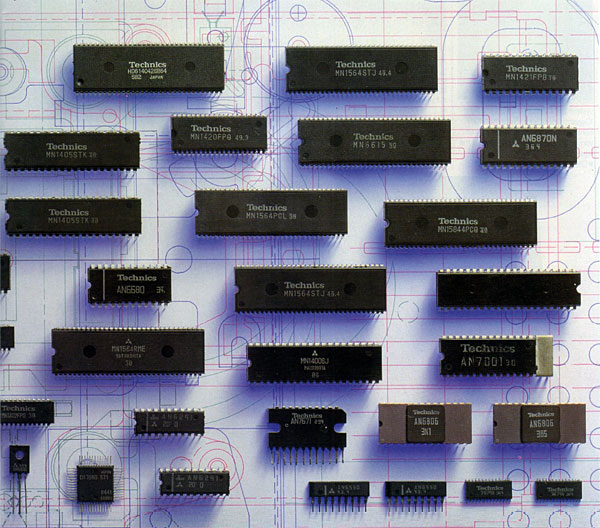Technics SL-P3 CD Player Page 2
Incidentally, the setting of the volume control is automatically stored every time the machine is used so as to avoid nasty surprises at switch-on. This requires a small internal battery, which in our example is still the original one, fitted in the factory over 35 years ago. A feather in the cap of Japanese design! A further striking feature is the 'disc prism', which allows a section of the spinning disc to be seen, apparently vertically, when the SL-P3 is viewed directly from the front. It is quite a thing to see a 12cm disc seemingly upright in an 8cm-tall player!
![]() Tim Listens
Tim Listens
As one of the more expensive CD players on the market a the time, one is right to expect good audio performance from the SL-P3. This said, under the skin it is still a basic single-DAC machine with no digital filtering and as such is easily beaten in the key areas of tonality and imaging by any passing Philips CD 304 – a natural rival when new. With that observation out of the way, there is still much to enjoy here and the Technics SL-P3 has a character all of its own.

In a way it is a caricature of everything that hi-fi's old guard said was wrong with CD when the format first appeared, being a little cold and bland for some tastes. The trade-off, however, is an impressive sense of focus, at least with simply recorded material. The Joan Armatrading track 'Down To Zero' from the compilation Track Record [A&M CDA 63725] sounded a little raw played on the SL-P3, but the crispness of the vocals was excellent.
I felt the designers hadn't tried to do too much with the analogue filtering on this model, the result being that more of the music was being revealed than when they really went to town in the pursuit of technical perfection. The bass, however, was flat and uninteresting, as if the drums had been stuffed with pillows, though moving the speakers further into the corners of the room helped a little.
I'd give the phase-correcting system partial credit. Unlike basic single-DAC players, the SL-P3 doesn't produce the typical pool of sound around each loudspeaker with nothing in the middle. Rather, it gives a pleasingly broad spread, which extends well beyond the speaker boundaries. Vocal centre presence is what is compromised, for instead of projecting a discrete position where one could close one's eyes and point to where a performer is located, it instead gives an imprecise area of sound, centrally located and roughly half of the distance between the speakers.
The way the SL-P3 handles orchestral set pieces, such as the overture of Rossini's La Gazza Ladra [Deutsche Grammophon 431 653-2] may divide opinion. It gives the performance a bright and dynamic airing with shimmering cymbal crashes and scintillating drum rolls set into a wide and spacious soundstage, which is quite impressive for a player of this type.

High Opinion
Again, though, the lack of bass depth defines a barrier between creating a mental illusion of attending a live performance and the knowledge that one is merely listening to a recording. It's like being offered a dry Jacob's cracker when what you really want is a gooey slice of Victoria sponge.
Nevertheless, I still came away from the audition with a high opinion of the SL-P3. It's as good to listen to as any Japanese player of its generation I've heard, aside from the Aiwa DX-1500 (with its 2x digital filter from Yamaha) and discounting machines from Marantz due to their use of Philips technology. It's another take on how CD can sound, and a fascinating one at that.
Buying Secondhand
Judging by the numbers remaining in circulation, the SL-P3 was not a popular model. Thankfully it is well made and durable, which is just as well since key items, such as the optical block and digital module, have not been available as replacement parts for many years.

A further complication arises from the fact that there is no built-in test mode (unlike most Philips, Pioneer and Sony machines), so a special jig and test adapter is required to enact some of the setup procedures laid out in the player's service manual. For this reason, all the servo adjustments are best left alone.
Yet the most common problem is far more mundane – a failure to read a disc or to play properly is often the result of the tiny belt that links the sled motor to the worm gear it drives being stretched or worn. This is best replaced with a suitable o-ring as belts are not routinely made in such small sizes.
Hi-Fi News Verdict
An unusual machine that is well worth seeking out for any collector of early CD players. Some may find the sound lacking in bass depth, but its focus and crispness make up for this. The analogue phase correction system is a novel approach to what is a well publicised problem, and comes pretty close to solving it. Superb styling, fine ergonomics and excellent build make the SL-P3 a satisfying player to own.























































